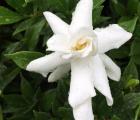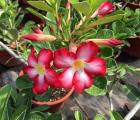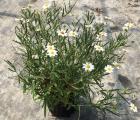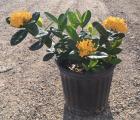Frostproof Gardenia
The Frostproof Gardenia bears shiny, dark, thick medium-sized green leaves that are considered evergreen and contrast nicely with the intensely fragrant, double white flowers that bloom in late spring and through the early summer. The flower buds, that set in late July and early August and carry through winter, are resistant to late spring frosts that can damage them. This is an excellent choice for a lower-growing hedge or foundation planting. This gardenia can thrive with more direct sun than most other varieties and prefers well drained, acidic soils. When the soil is not acid enough, the plants cannot absorb needed iron appropriately and this can lead to a yellowish cast of the leaves known as Iron Chlorosis.





